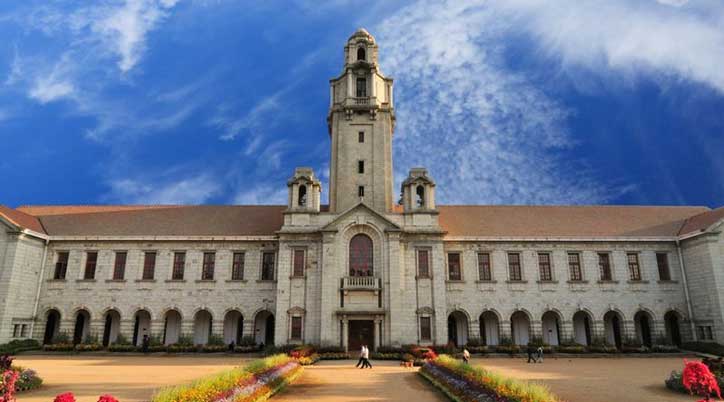 Chenni:
Chenni: Indian Institute of Science, Bengaluru ranks number one in National Institutional Ranking Framework 2018 list. In recent times, Anna University had been in the news for all the wrong reasons, with former vice chancellor M Rajaram being booked for graft. However, the Union human resources development ministry’s National Institutional Ranking Framework (NIRF) 2018 list released on Tuesday gave every reason for the university and its alumni to bask in glory.
The university has been awarded tenth rank in the overall category for the first time as a recognition of its academic achievements. In the university category, Anna University moved to fourth position from its last year’s sixth rank.
Indian Institute of Technology-Madras (IIT-M) has been ranked the best engineering college in the country for the third time in a row. The institute also retained its second position in the overall category.
Apart from these two, 11 other universities including Amrita, Bharathiar, VIT, Alagappa, Madras University, Agriculture University, SASTRA, Ramachandra, SRM, Sathyabama and Saveetha made it to the top 50.
Besides this, three city colleges made it to the top 10 under the colleges category. This included Loyola College, Madras Christian College and Presidency College which secured ranks of 2nd, 12th and 96th respectively in the 2017 list.
Speaking to TOI, Sunil Paliwal, state higher education secretary, said Tamil Nadu was way ahead of other states in the NIRF 2018 list. “The state government has been urging authorities to give importance to NIRF and NAAC accreditation in all the meetings of vice-chancellors and regional joint directors held in the last one year. That is why a greater number of government colleges participated this year and it is paying dividends now.
Five Punjab institutes have made it to the top 100 institutions of India, as per the National Institutional Ranking Framework (NIRF)-2018, released by the Union ministry of human resource development (HRD) on Tuesday.
These are Panjab University (PU), Chandigarh; Punjab Agricultural University (PAU), Ludhiana; Guru Nanak Dev University (GNDU), Amritsar; Thapar Institute of Engineering and Technology (TIET), Patiala; and Indian Institute of Science Education and Research, Mohali.
The rankings were released by HRD minister Prakash Javadekar in New Delhi.
Panjab University (PU) has been ranked 33rd in overall category and 20th among universities. Last year, it was ranked 54th in overall category and 33rd among universities.
TIET has bagged 50th slot in the overall category and 33rd in the university category and 20th in the engineering category.
TIET Director Prakash Gopalan said, “A bright future awaits a Thapar graduate as the university has embarked on a programme to modernise itself in all aspects.”
Indian Institute of Science Education and Research, Mohali, has been ranked at 55th slot in the overall category
Meanwhile, PAU has slipped by 20 positions. It has been ranked 60th in overall ranking as against 40th last year.
GNDU has not only made to the top 100 institutions for the first time, it got 86th position in overall ranking and 59 in the university category.
GNDU vice-chancellor Dr Jaspal Singh Sandhu said, “It’s delightful that after securing full autonomy from UGC by becoming Category-1 university, GNDU has now made it to the top 100 institutions of India.”
Meawhile, Punjabi University, Patiala, has failed to make it even in the list of top 100 universities of the country.
Commenting on IIT-M’s achievement, Bhaskar Ramamurthi, director of the institute, said the ranking is an affirmation of the consistent hard work of the faculty and students. “We will continue to forge ahead with the same energy to reach greater heights”, he added.
The 160-year-old University of Madras has improved its NIRF ranking in 2018 from 64 to 29 (overall) and from 41to 18 (for universities), which is ahuge leap.
Vice-chancellor P Duraisamy said this was mainly due to a 25% increase in the student enrolment and other parameters like research projects and expenditure on infrastructure and equipments. “The improvement in ranking is significant as the competition this time was intense. 4,000 institutes applied for NIRF,” he said.
“The healthy competition and the staff response has enabled SASTRA to stay among the top 10 private universities with relative displacement almost negligible when compared to 2017 rankings,” said S Vaidhyasubramaniam, dean, planning & development, Sastra University.
The NIRF rankings focus on five prominent key parameters — teaching, learning and resources; research and professional practice; graduation outcomes, outreach and inclusivity; and perception.
 Chenni: Indian Institute of Science, Bengaluru ranks number one in National Institutional Ranking Framework 2018 list. In recent times, Anna University had been in the news for all the wrong reasons, with former vice chancellor M Rajaram being booked for graft. However, the Union human resources development ministry’s National Institutional Ranking Framework (NIRF) 2018 list released on Tuesday gave every reason for the university and its alumni to bask in glory.
Chenni: Indian Institute of Science, Bengaluru ranks number one in National Institutional Ranking Framework 2018 list. In recent times, Anna University had been in the news for all the wrong reasons, with former vice chancellor M Rajaram being booked for graft. However, the Union human resources development ministry’s National Institutional Ranking Framework (NIRF) 2018 list released on Tuesday gave every reason for the university and its alumni to bask in glory.